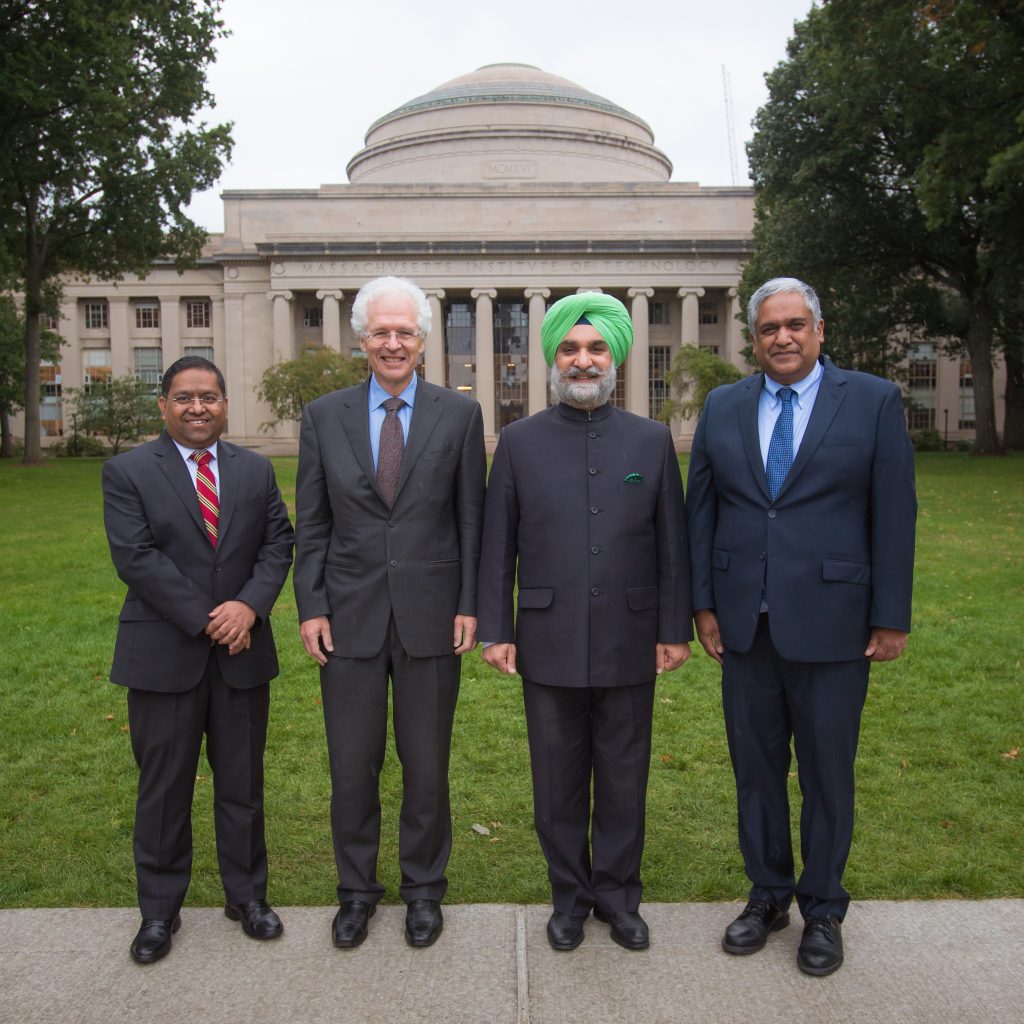School of Engineering hosts Indian dignitary for visit
Taranjit Singh Sandhu, Indian Ambassador to the US, toured campus and engaged faculty and students
Zach Goodale | School of EngineeringOn Tuesday, October 4, the MIT School of Engineering hosted Indian Ambassador to the US Taranjit Singh Sandhu, to engage in exciting discussions about climate and sustainability, healthcare, education, and the future of technology. As part of his visit, the ambassador met with students and faculty, and toured lab facilities. His visit was part of a series to area universities in which the ambassador aimed to strengthen partnerships in education, business, and innovation.
Speaking to a group of MIT students of Indian heritage, Ambassador Sandhu espoused his message of knowledge-sharing between the United States and India, and highlighted the growing need for the two countries to work together. He also expressed tremendous pride in the work of those students from India attending MIT and universities elsewhere in the United States.
“There is something like two hundred thousand Indian students in universities around the country, and about two-thirds of them are in stem fields,” Sandhu shared.
“In a sense, each of you is an ambassador for our country. Affordable healthcare, the internet of things, innovation, these are important areas where the United States and India are currently collaborating, and they are places where you can have tremendous impact. What we are continuing to see more and more, people of Indian descent on the boards of businesses and organizations, and that they are increasing value.”
Sandhu also discussed research highlights with a number of faculty to identify areas with collaboration potential. The ambassador spoke of India’s start-up explosion and growth of tech — not just in India’s largest cities, but in many of the country’s smaller cities as well.
“Currently, internet users in rural India outnumber those in urban centers by 20 percent. Technology will most certainly be an important part of our future,” said Sandhu.
“India is a very young nation by population, nearly 50 percent are aged 25 and younger. We have a great need to skill that population appropriately,” remarked Sandhu. “We have a large pool of human talent, which could be a resource to the world.”
“I was delighted to host Ambassador Sandhu during his visit and share some of the amazing work of our faculty and students,” said Anantha Chandrakasan, dean of the School of Engineering and Vannevar Bush Professor of Electrical Engineering and Computer Science. “I look forward to future discussions of collaboration opportunities.”
Richard Lester, the Japan Steel Industry Professor and Associate Provost, noted MIT’s ability to attract top students from around the world, including those of Indian origin.
“MIT is a very cosmopolitan place with about 45 percent of our graduate students and 45% of our faculty being born overseas. We’ve thrived as an institution by being able to attract the most talented students and researchers from around the world,” said Lester, who oversees the international activities of the Institute. “Today we have more than 300 Indian students here on our campus, as well as nearly 100 postdocs.”
The ambassador was joined by Consul General of India, Randhir Jaiswal, during his visit and tour of campus. Together, they witnessed a drone demonstration and took a glimpse inside MIT.nano.
“The visit to MIT gave me an opportunity to learn about the various knowledge connections, past and present, that India has developed with this most distinguished institution,” said Jaiswal. “It was truly exciting to see the ongoing research work in the fields of nano-tech, drone-tech, A.I., and also innovations that impact our daily lives: drinking water, vision for partially blind, and Jaipur prosthetics. I very much look forward to coming back and I thank Dean Chandrakasan for hosting us.”
